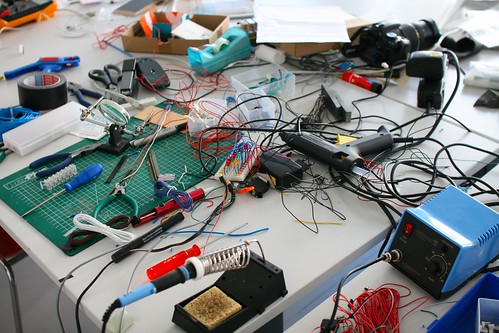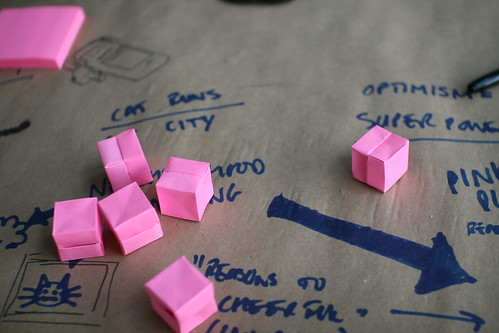In a recent article about the Internet of Things for ACM interaction, Chris Speed discusses the notion of "a continuum of artifacts that are more or less valuable in their material or immaterial form".

 (Networked objects being designed at the HEAD-Geneva design school)
(Networked objects being designed at the HEAD-Geneva design school)
On this continuum, Speed distinguishes two poles: "things that are actually in the world, and things that are not actually in the world"... which raise interesting new question from both a design and cultural standpoint. To him, the materiality of both is influenced by their potential "information shadow", what Speed describes as "an immaterial other".
This decoupling between material things and their immaterial counterpart may lead to interesting "design futures" described in the articles... and that explain the title of the paper ("An internet of things that do not exist"). Some excerpts that caught my attention:
"we may need to design blank objects that have no other function than to become the host for memories that have lost their connection with the original physical artifact. Other times, discarded and culturally lost objects may be used because they retain some of the physical attributes that trigger associations with immaterial things (e.g., memories) that have lost their original material partner. (...) As well as becoming conduits that allow us to recall information from the past, things will help us to recover memories that have lost their physical place in the world (...) In the Internet of Things, objects may end up on your mantelpiece with associated memories of completely different artifacts. The value of these vessels and our attachment to them will likely depend on the social data stored in them, rather than on their physical form."
 (Potential candidates as blank objects meant to receive memories?)
(Potential candidates as blank objects meant to receive memories?)
Why do I blog this? simply because I find interesting (culturally and design-wise) this distinction and the consequences that the author describes. The idea of having blank objects (and designing them) or to associate immaterial counterparts to objects which are totally different may lead to curious avenues. This is of course a shift that will be important to explore in several context and I wonder about the implications for the kind of domains we are interested in at Liftlab.